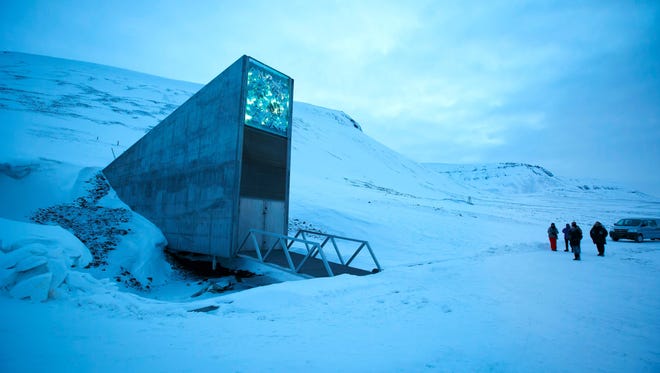Precious seeds in Norway's 'Doomsday vault' are safe — for now
The so-called "Doomsday seed vault" deep under a remote mountain in Norway is safe, at least for now, the nation's government said.

Melting permafrost late last year sent "meltwater gushing into the entrance tunnel," the Guardian said, threatening to flood the precious seeds in what's officially known as the Svalbard Seed Vault.
It's known as the "Doomsday" vault because it contains seeds for every crop civilization would need to resume life in the event of a worldwide catastrophe, Weather.com said. The vault keeps seed samples — and duplicate samples — preserved under certain conditions for such an occasion in case it ever happens.
The vault has the capacity to store 4.5 million seed samples from around the globe, shielding them from climate change, wars, natural disasters and other threats, the Associated Press said. The vault holds the seeds of many tens of thousands of varieties of essential food crops such as beans, wheat and rice.
Located 620 miles from the North Pole on the island of Spitsbergen, the vault is the world's largest secure seed storage, opened by the Norwegian government in 2008. From all across the globe, crates of seeds are sent there for safe and secure long-term storage in cold and dry rock vaults, the Norwegian government said.
"The building is designed for virtually infinite lifetime," according to the facility's website. "By building the vault 130 meters into the rock and 130 meters above sea level, the facility is robustly secured against external hazards and climate change effects."
Or so they thought: The Arctic has seen extraordinary, unprecedented warming over the past several decades, fueled by man-made climate change. Since 1900, it's warmed by a whopping 6 degrees, the National Oceanic and Atmospheric Administration said. In fact, the Arctic is warming at more than twice the rate of lower latitudes,
“It was not in our plans to think that the permafrost would not be there and that it would experience extreme weather like that,” Hege Njaa Aschim, from the Norwegian government, told the Guardian.
Fortunately, she said the meltwater did not reach the vault itself, and the precious seeds remain safe, for now.
"The seeds are completely safe and no damage has been done to the facility," the seed vault said in a press statement. It said the vault "is taking appropriate measures to ensure the protection of the seed vault and improve the construction to prevent future incidents."
"Globally, the seed vault is, and will continue to be, the safest backup of crop diversity," the statement said.
